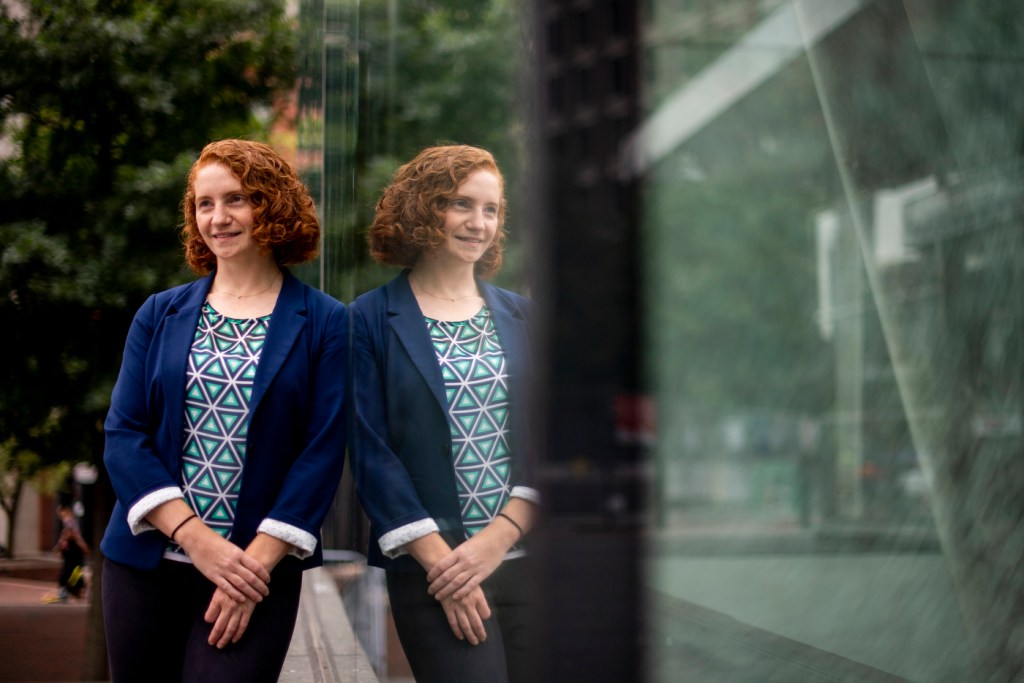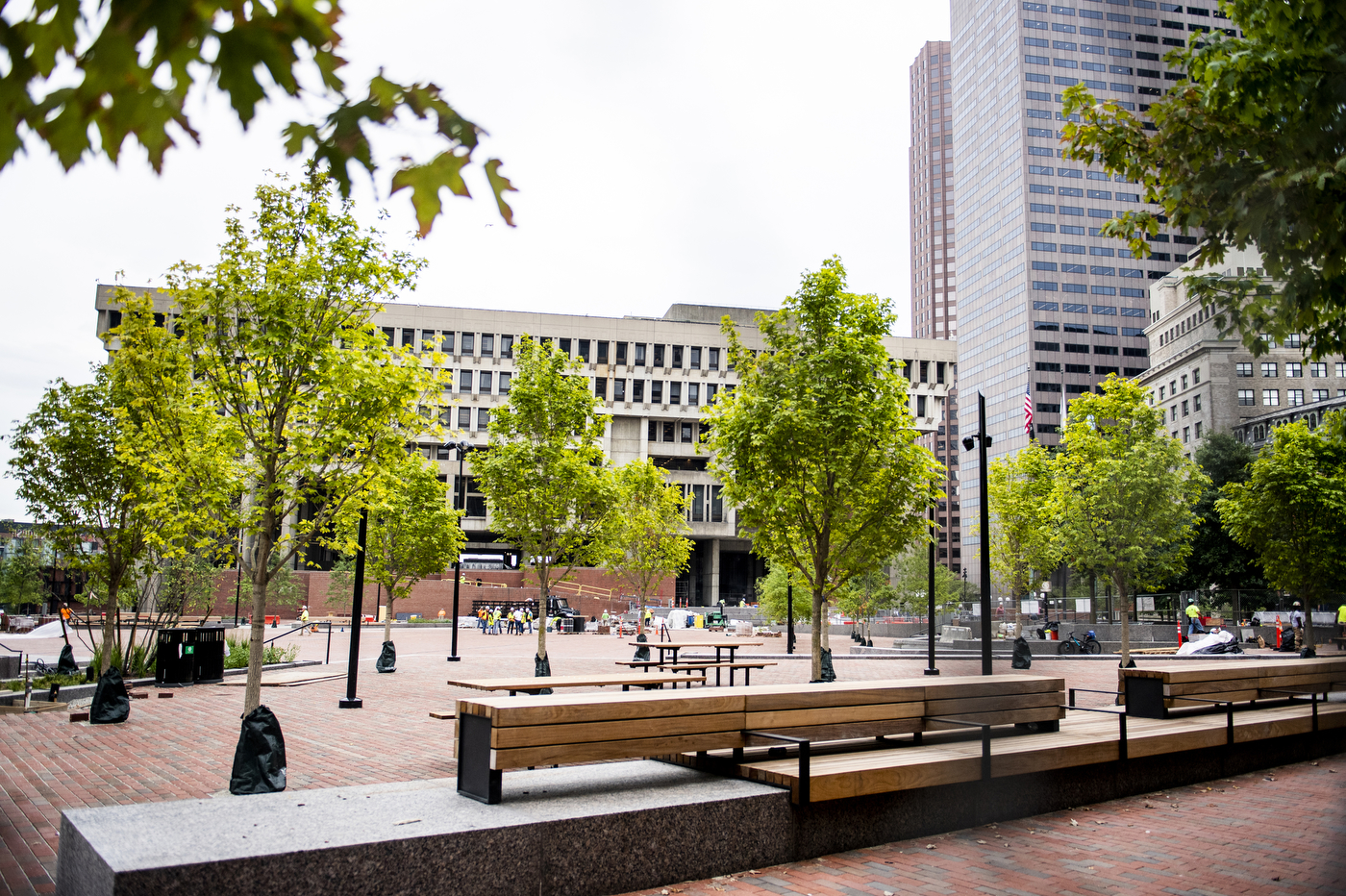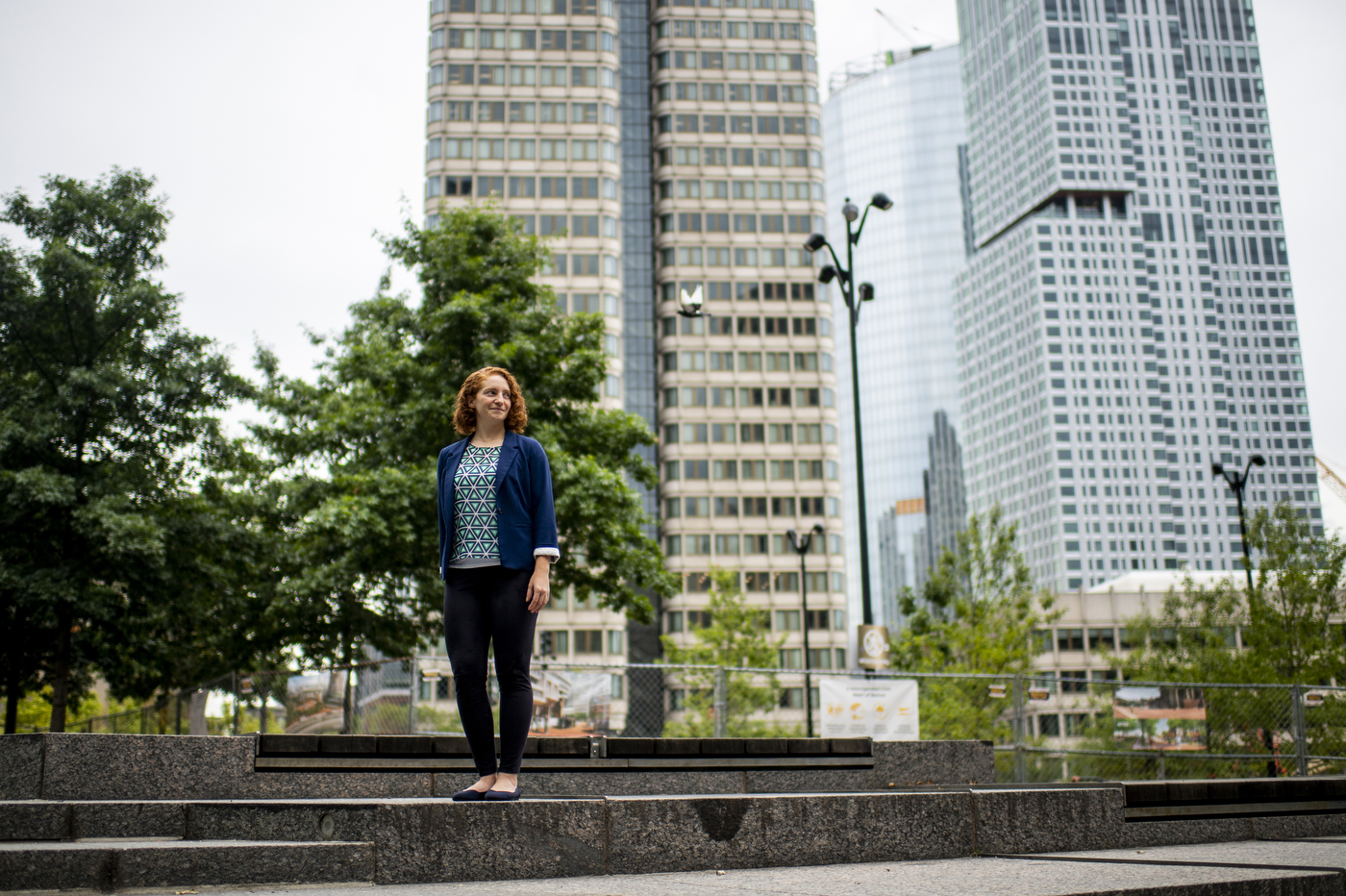Kate England, NU grad, named Boston’s first director of green infrastructure

Northeastern University graduate Kate England is making environmental history as the city of Boston’s first director of green infrastructure.
The appointment announced recently by Boston Mayor Michelle Wu will give England a leading role in building and maintaining ecologically friendly and sustainable approaches to stormwater diversion and to the eradication of urban “heat islands” that are more prevalent in low-income neighborhoods.
“Green infrastructure goes hand in hand with climate resilience,” says England, who graduated from Northeastern in 2008 with majors in political science and international affairs.
The creation of a green infrastructure director for the city of Boston is part of Wu’s commitment to a Green New Deal, according to a press release from the mayor’s office.
“It shows (green infrastructure) is not just a small part of what we do” but an integral part of Boston’s approach to building and maintaining stormwater systems, roads, sidewalks, parks and other urban spaces, England says.
It’s increasingly common for cities to embed green infrastructure personnel in their water and sewer departments, but appointing a green infrastructure director to a key city role “is really unique and special,” she says.


Photo by Matthew Modoono/Northeastern University

Wu says that she is excited for England’s “vision and leadership,” saying in a press release that these qualities are especially important as Boston faces rising sea levels and temperatures.
England says her interest in environmental policy was piqued when she took a class on the science behind climate change at Northeastern.
“I loved that class,” she says.
The woman who insists she did not hear the word “stormwater” until she went to college ended up in the desert exploring food propagation as part of a Dialogues of Civilization exchange in Egypt.
England also participated in a Dialogues of Civilization exchange in Geneva, Switzerland, where she worked with the U.N. Environmental Program and learned what other countries were doing to mitigate the impact of climate change.
She says it was a time when many in the U.S. were calling climate change a myth.
“I had a lot of really great opportunities at Northeastern,” says England, who came to the Boston campus from a smaller college her sophomore year.
After graduation, an internship with the Emerald Necklace Conservancy morphed into a full-time job.
England says she loved working on drainage and ecology issues at the conservancy, but it seemed every time she proposed a solution to a problem someone pointed out she had no technical expertise in the area.
“I said, ‘Fine, I’ll go back and get my technical stuff,’” she says.
After earning her master’s degree in environmental studies and working as a consultant for a few years, England went to work for the Boston Water and Sewer Commission (BWSC). Most recently she was employed as a statewide planner for the Massachusetts Department of Conservation and Recreation.
In her new role at City Hall, England will reactivate a green infrastructure working group she started at BWSC and assess the needs of residents of Chinatown, East Boston, Mattapan and Roxbury for improved flood control, air quality and tree canopies.
“Boston’s no different from any other major city,” says England, who resides in Hyde Park. She says lower income urban areas have fewer trees and more hardscape—structures made of concrete, asphalt and metal.
“The historic approach to stormwater is to put it in a catch basin and put it in a pipe. It’s called gray infrastructure,” England says. Then the water is discharged into a water body such as the Charles River or Boston Harbor.
But gray infrastructure is no match for the erosive force of nature. As storms intensify and sea levels rise, flooding increasingly plagues the low-lying areas of Boston and other major cities.
Green infrastructure takes another approach, England says. Stormwater is redirected to constructed wetlands and rain gardens, low areas planted with native vegetation and soil mixed with sand, or to bioswales that are a larger version of rain gardens.
Rain gardens are easy to plant beside sidewalks and city streets, says England, who also supports new tree planting methods that maximize the roots’ use of rain and stormwater.
England is already passing these lessons on to the younger generation, having worked with the Charles River Watershed Association and Boston public schools to develop a green education program that meets state curriculum guidelines for the city’s fifth and seventh grade students.
The older students are asked to assess the condition of their schoolyard, which oftentimes resembles a parking lot, England says.
They are divided into four groups and asked to come up with paved, vegetative, combination or freeform solutions to such issues as cracks in the pavement and erosion.
“It’s a really fun unit. I wish I had it when I was in school,” England says. “Nature is better at stormwater management than we are.”
For media inquiries, please contact media@northeastern.edu.






